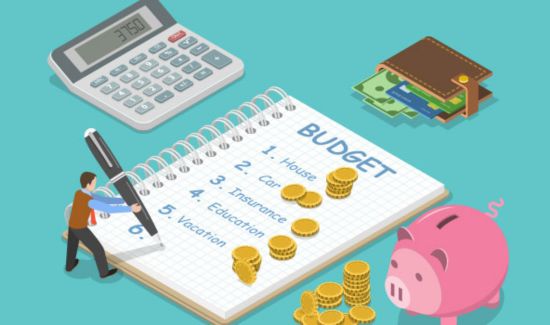Mastering Your Finances: A Step-by-Step Guide to Creating a Budget
Introduction:
Creating a budget is like drawing a roadmap to your financial success. It's a proactive approach to managing your money, ensuring that every dollar you earn has a purpose. In this comprehensive guide, we'll walk you through the process of creating a budget, from setting financial goals to tracking your spending, and provide valuable tips for sticking to your budget over the long term.
Setting the Stage: Why Create a Budget?
Before diving into the intricacies of budgeting, let's first understand why it's so essential:
1. Financial Clarity: A budget provides clarity on your financial situation by detailing your income, expenses, and savings goals. It helps you understand where your money is going and identify areas for improvement.
2. Goal Achievement: Whether it's buying a home, paying off debt, or saving for retirement, a budget serves as a roadmap for achieving your financial goals. It allows you to allocate resources strategically and measure progress over time.
3. Control Over Spending: By establishing spending limits for different categories, a budget helps you control impulse spending and prioritize your financial priorities.
4. Emergency Preparedness: A well-crafted budget includes provisions for emergencies and unexpected expenses, ensuring that you're financially prepared for whatever life throws your way.
Now that we understand the importance of budgeting let's dive into the step-by-step process of creating a budget:
Step 1: Set Financial Goals
Before creating a budget, it's essential to define your financial goals. These could include short-term goals like building an emergency fund or long-term goals like saving for retirement. Be specific about your goals and assign a timeline and dollar amount to each one.
Step 2: Calculate Your Income
Gather all sources of income, including salaries, wages, bonuses, freelance earnings, and investment income. Calculate your total monthly income after taxes and other deductions to determine how much money you have to work with.
Step 3: Track Your Expenses
Next, track your expenses for a month to get a clear picture of your spending habits. Categorize your expenses into essential categories like housing, utilities, groceries, transportation, and discretionary spending like dining out and entertainment.
Step 4: Differentiate Between Fixed and Variable Expenses
Differentiate between fixed expenses (those that remain relatively constant each month, such as rent or mortgage payments) and variable expenses (those that fluctuate, such as groceries or entertainment).
Step 5: Allocate Funds to Each Category
Based on your income and expenses, allocate funds to each category in your budget. Start with essential expenses like housing, utilities, and groceries, then allocate money to savings goals and discretionary spending.
Step 6: Adjust and Fine-Tune
Your budget may need adjustments as you fine-tune your spending habits and financial goals. Periodically review your budget and make adjustments as needed to ensure that it reflects your current financial situation and priorities.
Tips for Sticking to Your Budget:
1. Use Envelopes or Apps: Use cash envelopes or budgeting apps to help you stay on track with your spending in each category.
2. Automate Savings: Set up automatic transfers from your checking account to your savings account to ensure that you're consistently saving towards your financial goals.
3. Be Realistic: Be realistic about your budgeting goals and give yourself some flexibility for unexpected expenses or occasional indulgences.
4. Review Regularly: Regularly review your budget and spending habits to identify areas for improvement and make adjustments as needed.
Conclusion:
Creating a budget is the first step towards taking control of your finances and achieving your financial goals. By setting clear goals, tracking your income and expenses, and making adjustments as needed, you can create a budget that sets you on the path to financial success. So, take charge of your finances today, and start budgeting like a pro!


Post a Comment